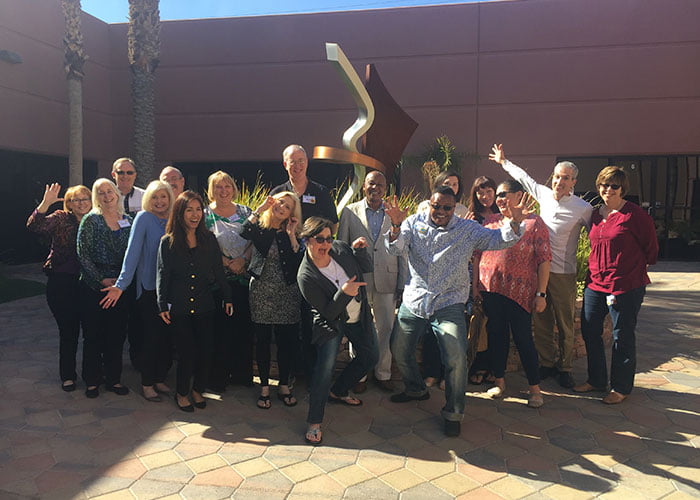When teams want to make changes, usually a “fix it” model is employed. People will often collect data, identify obstacles, make diagnoses. They ask, “What can we do to minimize client anger and complaints?” In an Appreciative Inquiry process, we’d ask, “When have customers been most pleased with our service, and what can we learn and apply from those moments of success?”
Sometimes, our problem-solving habit makes it easier for us to first identify an important gap, issue, or problems (what we want less of). This model may work for mechanical systems; however, for human systems we need to find a different way. In that case, we recommend reframing it into what we want more of.
AI utilizes interviews as the way to evoke stories that illuminate team and organizational strengths that also inform strategy. Positive stories – unlike data or lists – stir imaginations and generate excitement about the team/organization and what it can accomplish in the future. This way we build on what is already working! There are so many options for reframing and an excellent method is to use the paired interviews which are the foundation of any inquiry. We have learned that asking the first question is helpful for teams and groups so that they see the possible outcome rather than what they don’t want. The positive or generative opposite of poor communication is much more than good communication.
The language of questions determine the direction the inquiry will take, negative or positive (“Why is everyone so disengaged?” versus “Tell me about a time when this team had reason to celebrate; what made it possible?”).
Set up the space for one pair or more to comfortably interview each other. Allow space between pairs for easy conversation and flow.
Use the generic or gently modified interview guide for paired interviews along with these tips for conducting an Appreciative Interview:
From time to time, you can say things like, “Tell me more about that. . .” “Who was there…?”
Each person takes a turn interviewing the other. The interviewer will ask the questions. The interviewee will answer the questions, i.e. tell her or his story or stories. It is not a back-and-forth dialogue. First, deeply listen to your partner’s story or stories, then tell your story or stories.
Trust the process. Trust the people.
Excerpted from the Center for Appreciative Inquiry’s Appreciative Inquiry Facilitator Training© course: Shifting the paradigm: from problems to possibilities. This highly experiential, foundational training teaches how to facilitate positive change in organizations, schools, and communities. Learn more.


Add your comment now using your favorite social account or Click Here To Login
